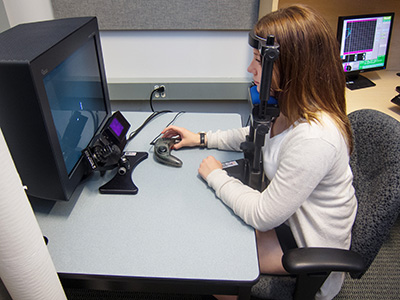A disturbing health portrait of single-room occupancy tenants
Living in a single-room occupancy hotel (SRO) is clearly better than being homeless. But it’s still a life plagued by disease, drugs and death.
 In one of the first studies to comprehensively document the health of people living in SROs in Vancouver’s Downtown Eastside, UBC researchers found that residents of that neighborhood suffered from an average of three illnesses at the same time, and had a death rate nearly five times greater than the general population’s.
In one of the first studies to comprehensively document the health of people living in SROs in Vancouver’s Downtown Eastside, UBC researchers found that residents of that neighborhood suffered from an average of three illnesses at the same time, and had a death rate nearly five times greater than the general population’s.
Led by William Honer, Head of the Department of Psychiatry, the study conducted psychiatric assessments, neurological evaluations, brain scans and blood tests with 293 single-room occupancy hotel tenants who participated in the study over an average of two years.
Other findings of the study, published in the American Journal of Psychiatry:
- 95 per cent were addicted to drugs, with almost two-thirds of them users of injected drugs.
- Nearly half suffered from psychosis, and nearly half had a neurological disorder.
- 18 per cent were HIV-positive and 70 per cent had been exposed to Hepatitis C.
SROs, due to their low rents, are a common alternative to homelessness for low-income individuals; in Vancouver, they provide shelter for about 3,000 people. Many but not all SROs are sub-standard in terms of health and safety, design, and, when income is taken into account, even affordability.
“Housing is not health,” Dr. Honer told the Vancouver Sun. “We need to go beyond just putting a roof over people’s heads.”
Could cancer cells be starved into submission?
Cancer cells, because they grow and divide much more rapidly than normal cells, have tremendous appetites. And that might be a key to their undoing.
Poul Sorensen, a Professor in the Department of Pathology and Laboratory Medicine, used cell cultures, worm and mouse models, and studies of human brain tumours to show that the activation of a protein called eEF2K allows cancer cells to survive severe nutrient starvation.
His investigation, in collaboration with researchers at the University of Toronto, McGill University and in the U.K., U.S. and Germany, was based on a simple question: How do tumour cells and healthy cells respond to the challenge of caloric scarcity?
“We were surprised that only certain rare tumour cells could survive such deprivation,” says Dr. Sorensen, a Senior Scientist at the BC Cancer Agency. “We then set out to find the reason. It’s because they had somehow learned to activate eEF2K.”
When he and postdoctoral fellow Gabriel Leprivier put mice expressing low levels of eEF2K on a low-calorie diet, large portions of their tumours began to rapidly wither. In contrast, the tumours in mice with high levels of eEF2K were “virtually bullet-proof” in the face of caloric starvation, Dr. Sorensen says.
The study – published in the journal Cell – suggests that aggressive cancer cells might be especially dependent on this enzyme to sustain their relentless proliferation. On the other hand, normal cells, with their moderate caloric needs, can survive without it.
That points to the possibility of targeting eEF2K. Most cancer treatments, including radiation and chemotherapy, are indiscriminate, killing both
cancerous and healthy cells. But a drug that inhibits production of eEF2K might kill aggressive cancer cells and leave normal cells unharmed.
Dr. Sorensen and his colleagues, using technology at UBC and BCCA, are now searching libraries of compounds in search of a drug – either existing, or perhaps yet-to-be-developed – that does just that.
Two doses of HPV vaccine can be as protective as three
 UBC researchers have found that girls who received two doses of the human papillomavirus (HPV) vaccine had as good an immune response to HPV-16 and HPV-18 infection as young women who received three doses.
UBC researchers have found that girls who received two doses of the human papillomavirus (HPV) vaccine had as good an immune response to HPV-16 and HPV-18 infection as young women who received three doses.
HPV infections cause nearly all cases of cervical cancer, which is the second-most commonly diagnosed cancer in women worldwide. The study, published in JAMA, lends more plausibility to adopting reduced-dose schedules for the vaccine, which would lower barriers to global implementation.
The study included 830 Canadian females from 2007 to 2011. The resulting data are the first to show the durability of the immune response of young adolescent girls over a three-year period.
Nevertheless, more data on the duration of protection are needed before reduced-dose schedules can be recommended, says lead co-investigator Simon Dobson, a Clinical Associate Professor in the Department of Pediatrics and Clinical Investigator at the Child & Family Research Institute.
“Reducing the number of doses affects vaccine and administration costs as well as potentially improving uptake rates,” the authors wrote. “There is a balance to be found between the incremental value of an additional dose on population effectiveness and the opportunity costs of using the resources required for the extra dose in other public health programs. This is especially the case for HPV vaccines at their present cost.”
“Eye soccer” reveals possible cause for schizophrenia symptoms
The eye movements of schizophrenia patients playing a simple video game provide an intriguing explanation for some of their symptoms, including difficulty with everyday tasks.

Neuroscience graduate student Kaity Lalonde demonstrates the “eye soccer” experiment that measured the eye movements of schizophrenia patients. Photo: Brian Kladko
In an experiment conducted by Miriam Spering, an Assistant Professor of Ophthalmology and Visual Sciences, schizophrenia patients were asked to predict the trajectory of a small dot that appeared briefly on a monitor as it moved toward a vertical line. As an infrared-equipped video camera tracked their eye
movements, participants would call out whether it would hit or miss the line.
The schizophrenia patients performed significantly worse than a control group in predicting hits and misses, and they were also not as good at tracking the dot with their eyes.
But the impairment of their eye movements alone was not severe enough to explain the difference in their predictive performance, according to the results published in the Journal of Neuroscience. So there was some kind of breakdown in their ability to interpret what they saw.
The patients were having trouble generating or using an “efference copy” – a signal sent from the eye movement system in the brain indicating how much, and in what direction, their eyes have moved. The efference copy helps validate visual information from the eyes.
“An impaired ability to generate or interpret efference copies means the brain cannot correct an incomplete perception,” says Dr. Spering, who conducted the
dot-tracking experiments as a postdoctoral fellow at New York University, and is now conducting similar studies at UBC. That would explain why schizophrenia patients often have poor motion perception and eye movements, leading them to bump into people while walking or making it a challenge to cross a street.
“But just as a person might, through practice, improve their ability to predict the trajectory of a moving dot, a person might be able to improve their ability to generate or use that efference copy,” Dr. Spering says. “My vision would be a mobile device that patients could use to practice that skill, so they could more easily do common tasks that involve motion perception, such as walking along a crowded sidewalk.”
